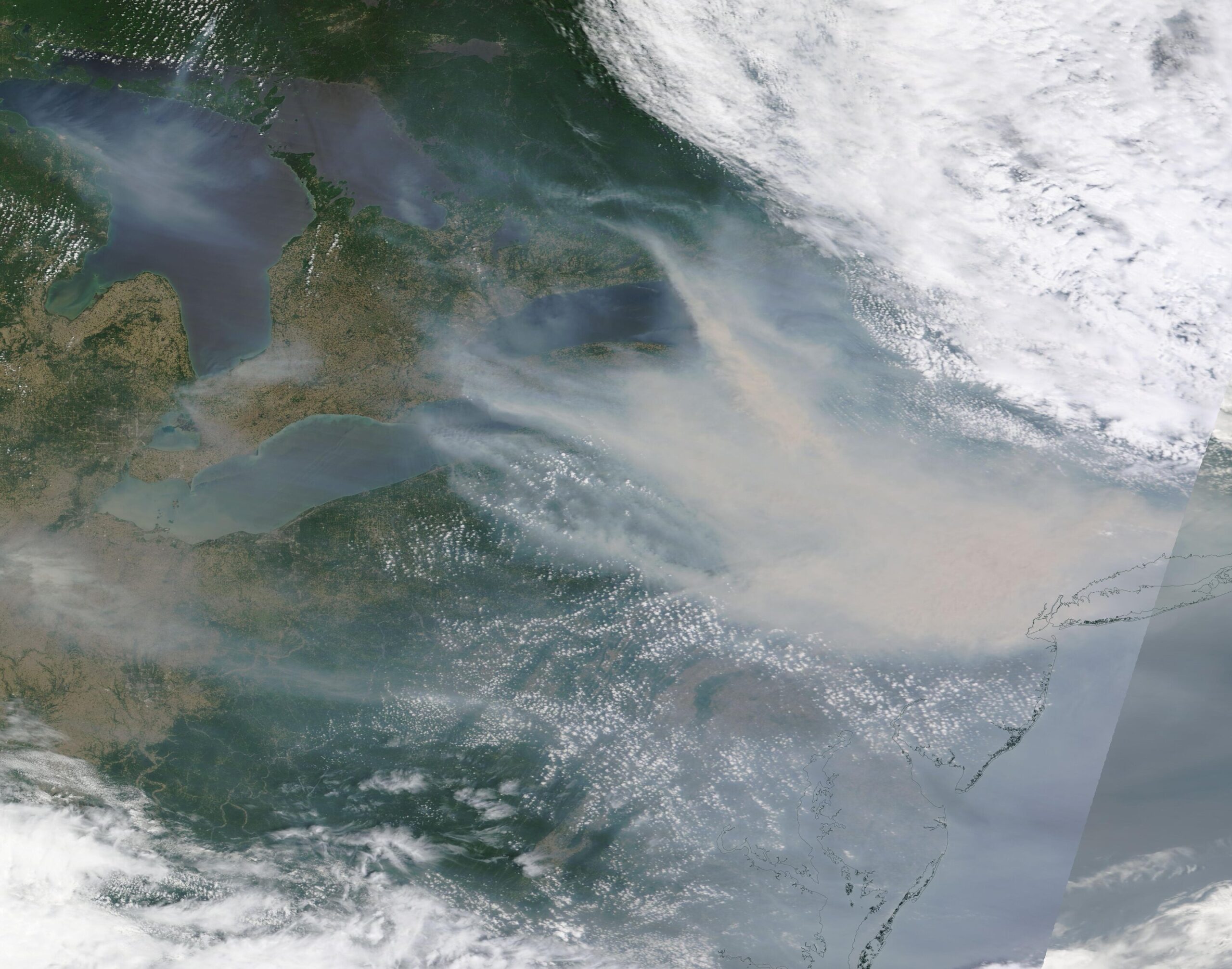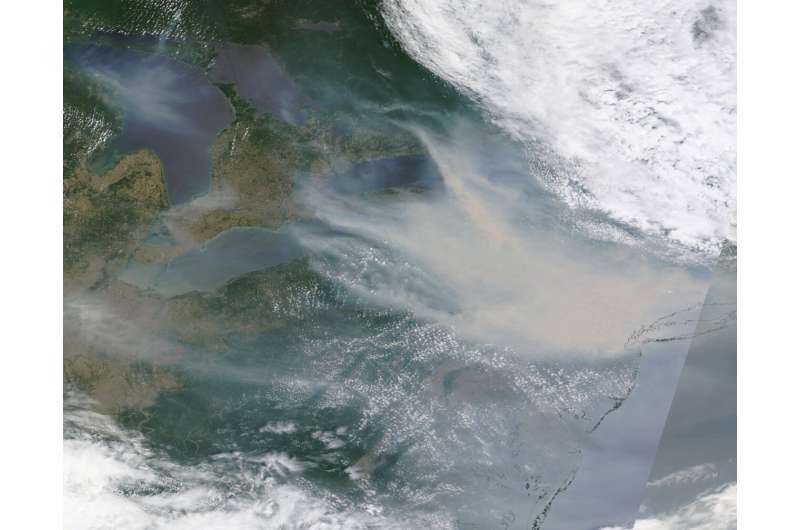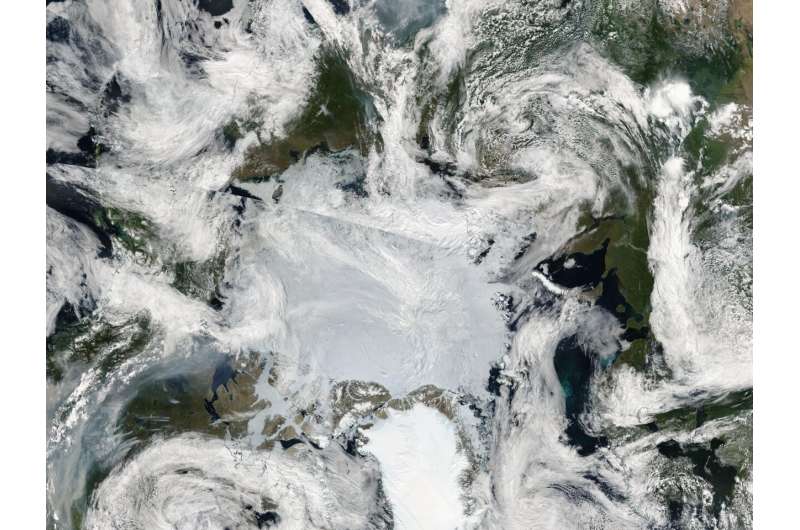

Wildfires have shaped the environment for millennia, but they are increasing in frequency, range and intensity in response to a hotter climate. The phenomenon is being incorporated into high-resolution simulations of the Earth’s climate by scientists at the Department of Energy’s Oak Ridge National Laboratory, with a mission to better understand and predict environmental change.
Two months into the 2023 peak summer fire season, Canadian wildfires had burned 25 million acres of land, disrupted the lives of millions and spread beyond the traditional confines of western Canada east to Nova Scotia. Smoke from the wildfires has drifted to heavily populated regions as far south as Georgia in the United States, across the Atlantic Ocean to Europe and into the Arctic Circle.
The impacts are being incorporated into large-scale simulations of the Earth’s climate, such as DOE’s Energy Exascale Earth System Model, which reflects land processes like the carbon cycle for better predictions of the future climate. E3SM runs on the world’s fastest supercomputers, including the Frontier exascale system at ORNL, providing highly advanced simulations to better predict environmental change that could affect the energy sector.
ORNL scientist Jiafu Mao focuses on Earth system modeling, improving simulations of land surface responses and feedback to environmental change. The models evaluate synergies among historical fire data, carbon emissions, atmospheric factors such as temperature and precipitation, and major land variables such as vegetation condition, soil moisture and land use. His machine learning algorithms have supported better projections of wildfire and associated socioeconomic risk that can guide adaption and mitigation strategies.
Using AI to sharpen wildfire risk projections
In one project, those algorithms were applied to improve the certainty of a series of Earth system models and predicted an increase in global wildfire exposure for the world’s population, gross domestic production and agriculture compared with untrained models. The research also indicated that models not constrained using the algorithms tended to overstate fire-related carbon emissions in regions with sparse vegetation. At the same time, the constrained models projected an increase in wildfire carbon emissions in tropical and subtropical regions as dense vegetation there dries and provides more fuel for fires.
“We want to reach a better understanding and prediction of wildfire drivers, as well as potential vulnerabilities in terms of human health, ecosystem and infrastructure,” Mao said. The challenge is getting increased specificity in wildfire simulations from higher-resolution datasets. It would be helpful to gather data into a central repository that are now scattered among various federal, state, university and national laboratory sources needs to be gathered into a central location, he added.
“There are gaps in observational data, with much of the global wildfire record based on satellite products that started being collected and made available only about 20 years ago,” Mao said. “Long-term, high-spatiotemporal resolution, continuously gathered observations regarding the fires themselves as well as post-fire recovery processes are sparse.”
To enhance wildfire-related datasets, Mao and ORNL colleague Fernanda Santos have launched a Fire Community Database Network to encourage scientists and land managers to submit environmental data on burned areas to a central repository. Sharing such information can not only improve research, but also inform land management practices.
Forrest Hoffman, who heads the Computational Earth Sciences group at ORNL, is interested in the biogeochemical processes, including wildfire, that drive the evolution of the climate over multiple decades. He is laboratory research manager for the DOE Reducing Uncertainties in Biogeochemical Interactions through Synthesis and Computation Science Focus Area, or RUBISCO, which brings together scientists from national labs and universities to evaluate and improve Earth system models using laboratory, field and remote sensing data.
Wildfire has been traditionally underrepresented in Earth system models, an issue that Hoffman and his colleagues are working to address. “Getting the metrics right about burned areas derived from satellite remote sensing datasets means we can then better predict what will happen as climate change evolves under potential future scenarios,” he said.

Hoffman touted the machine learning methods Mao and other researchers are developing as part of the RUBISCO project as one way to get fire metrics right and represented.
Like Mao, Hoffman recognizes the need for new observational datasets. Sometimes researchers can’t see through the smoke on visible-sensor satellite images to evaluate fire emissions, and more multispectral and thermal imagery that provides finer detail on land surfaces would be helpful to fill in data on immediate and long-term impacts, Hoffman said.
‘ForWarn’ing trends with better metrics, methods
Hoffman has an extensive track record in evaluating remote sensing data to improve understanding of the evolving climate. Ten years ago, he co-led the development of a satellite imagery-based visualization tool called ForWarn to track changes in the nation’s forest system for the U.S. Forest Service. The tool, with ongoing updates by ORNL, examines satellite imagery across the United States every eight days to detect disturbances such as wildfire, insect outbreaks, wind and hail.
ForWarn is used by the Forest Service to identify threats to forest health, and many land-management agencies and individual researchers use the tool to identify and track disturbances, changes in land cover and crop production.
“The system tracks subtle changes in the annual phenological cycle,” Hoffman said. “For instance, what if vegetation greenness is suddenly stronger than it has been previously—can we attribute that to wetter-than-normal weather?” In the Great Smoky Mountains, ForWarn has been revealing an interesting trend that could change the region’s vegetation diversity. “We’re seeing a stronger wintertime reduction in greenness that we think is the result of the death of evergreen vegetation due to the Hemlock wooly adelgid,” a well-known invasive species in the U.S. “Those evergreens are then being replaced by deciduous vegetation, so you’re seeing more seasonality in greenness.”
Another dataset that scientists around the world can access to understand fire extent and severity and obtain estimates of fire carbon emissions and other measurements is the ORNL DAAC, or Distributed Active Archive Center for Biogeochemical Dynamics, managed by ORNL. The ORNL DAAC is a data center within the NASA Earth Observing System Data and Information System.
It is one of the tools NASA provides to enable researchers, resource managers and disaster management teams to understand and monitor environmental conditions before a fire starts, measure the intensity and development of fires as they’re burning, and assess the effects and impacts of the events.
Mao added that “ORNL has a wide body of work in wildfire. But it will take continued collaborations with our colleagues across the country at national labs, universities, federal agencies, as well as at the state and local level and even with private land managers to tackle the challenge of better predicting these events and building up resilience to their many impacts.”
Provided by
Oak Ridge National Laboratory
Citation:
Improving wildfire predictions with Earth-scale climate models (2023, July 31)
retrieved 31 July 2023
from https://phys.org/news/2023-07-wildfire-earth-scale-climate.html
This document is subject to copyright. Apart from any fair dealing for the purpose of private study or research, no
part may be reproduced without the written permission. The content is provided for information purposes only.